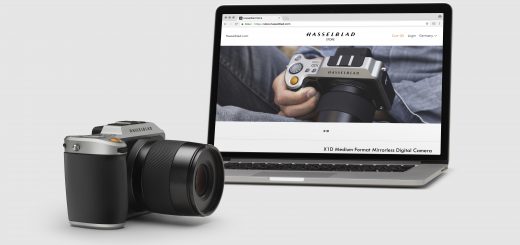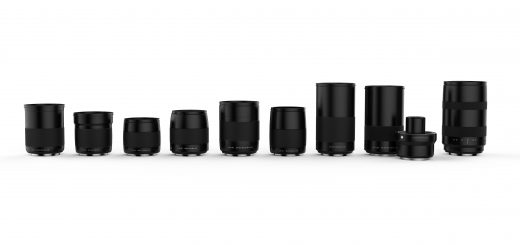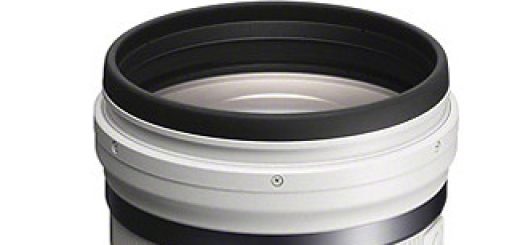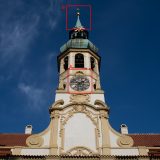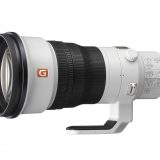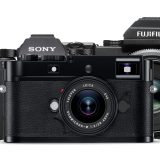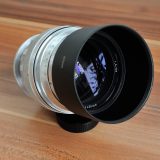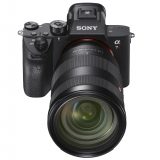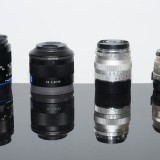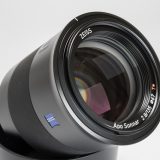Tagged: NIKON D7200, NIKON D810, SONY a77II
This topic contains 21 replies, has 3 voices, and was last updated by verybiglobo 4 years, 8 months ago.
-
AuthorPosts
-
Unfortunatelly, I can’t help you much with third party options, except for Zeiss, which is manual focus only (for Nikon) and even more expensive than native lenses.
Main problem which I historically had with Sigma, Tamron, Tokina was quality control and auto focus compatibility issues.
I am even not following much their recent offer, but I would suggest you to look for the reviews on photozone.de, because Klaus is making good quality tests and his findings are usually in line with my experience.
I like Samyang lenses for their optical qualities – 14/2.8 (not for architecture, but great UWA for landscape), 24 and 35/1.4, both are great astro-photography lenses because of superbly corrected coma, 135/2 is amazing short tele and even 85/1.4 is interesting, because of very smooth bokeh.I tried few Sigma lenses, 85/1.4, 35/1.4 art, 50/1.4 art and new 150-600 Sport e.g. They were all nice lenses optically.
I had before Tamron 70-300 VS USD and it was nice budget lens too, better than its Canon counterpart.
Tokina had great 11-16/2.8. With all those however, it was problem to pick the piece that wasn’t de-centered and that will focus accuratly. Not that I spent too much time looking for good samples…
Cheers,
ViktorJust checked photozone.de
Loads of info! Thanks for the recommendation 🙂
Dilemma:
24-70mm F2.8 and 70-200mm F2.8, or just one instead 18-200mm F3.5-6.3
Your thoughts?
Thanx
Hi Seadog11,
24-70/2.8 and 70-200/2.8 are part of so called “Holly trinity” set-up. (14-24/2.8 will complete it). While this reference is usually related to original Nikkor lenses, it also represents needs of commercial photographer, one who is shooting events, weddings, corporate portraits, familly, kids, pets and similar assignments.
Those photographers needs fast AF, solid image quality from widest aperture, good build quality, durability, some sort of weather sealing, in other words – reliability in every situation.
While prime lenses will mean another small step in image quality improvement and more importantly faster aperture (usually), versatility of the zoom is more important for them, because their work is very much about speed and readyness. You’ll see them many times to literally throw their camera anywhere nearby, lift another body and keep shooing. Bride will never repeat her walk, ring will never be put again on that finger, father will cry only few seconds, etc.Holly trinity line-up is made for that type of photographers at the first place.
Superzooms are consumer graded lenses. They are designed for those who doesn’t like to switch lenses in the field, who are shooting mostly in full daylight, who doesn’t need superfast auto focus and who can live with slight image quality compromise.
If such a lens will be at least. f/2.8, I believe that many above mentioned pro photographers will use it too, but unfortunatelly superzoom lens is rather slow.
Superzoom is great for traveling, but the biggest question is, why would you need it, considering bridge camera offers, that are cheaper, smaller and often full of extra features, such as 4K video (Sony RX10ii e.g.)
Superzoom is not a good option for interior scenes (need lot of light), architecture (usually pronounced distortion at wide end), action/sport (to much glass to move during focusing and thus slower auto focus) and images where imagequality is priority.In general, you are comparing “pro” with “consumer” grade products.
I have original Nikkor and Canon holly trinity set-ups, but I have heard about Sigma and Tamron being also very good optically, at least their recent 24-70/2.8 and 70-200/2.8 offers (not sure about AF consistancy).
Problem with AF and third party lenses is usually not in the accuracy, but in consistancy of AF accuracy. In other words, you can have 4 shots in perfect focus and 1 shot with shifted focus, but problem is that you never know when. that 1 shot will come. (That’s at leats my experience with Sigma and Tamron lenses that I had chance to try).
Cheers,
VktorYes,…I understand, and I thought it might be like that.
I also thought about what you wrote about what should be taken into consideration when choosing the appropriate camera for architectural interior photography, especially the articulating screen.
If I would rate high the importance of this particular spec, it would bring me back towards SONY cameras, where I have a few interesting options.
Now,…I have to set a realistic budget boundaries, and make a decision for which I need your advice. The main dilemma is whether to opt for a APS-C camera (such as above mentioned SONY ALPHA 77 II) and spend more money on better glass, or should I go for more modest (third-party) glass, and spend more money on full-frame camera, where I have two options in similar price range, namely SONY ALPHA 99 and SONY ALPHA 7R (DSLT or Mirrorless).
The obvious difference between the latter two is in the pixel count, and even though I prefer the articulating screen of A99 (as well as the overall build), it seems to me that there are many more lens options for the E-mount A7R.
It seems to me like a tough choice. Is it, really? Or does it come down to personal preference, especially considering a number of information from the reputable sources that the pixel count is not of essential importance?
On the other hand, I found out that even some professional photographers are using APS-C A77 m2!!!Think of it this way:
Full frame is better for low light (night, interior, underwater etc.) and for shallow DOF (portrait, close-ups)
APS-C is good for wildlife/sport (better reach in general), macro, travel (smaller size), budget (lenses are cheaper)
Both systems are good for landscape e.g (full frame has marginally better dynamic range at base ISO)
Lenses can make great difference in the resulting images. In general, differences between lenses will be more significant than between two same generation cameras.
Shooting portrait with 50/1.2 and 50/3.5 lens on the same camera, will result in entirely different subject isolation and surrounding context.
Shooting same portrait with the same lens and at same comparative DOF, with Sony A7r and A6000 might not show as much differences in comparison.I really don’t know what do you expect from your setup (there is no universal solution – best for everything type of setup), so maybe you should first put list of priorities on paper and than proceed with selection.
Out of the box, I would suggest Sony A6000 with kit lens and few additional lenses bought second hand – SEL 50/1.8 and SEL 55-210. This is very affordable setup (Sony is about to announce new APS-C camera, probably A6100, thus prices of A6000 are very low now) with great capabilities and the resale value shouldn’t drop too fast. Using this system for month or two, you might find its limits for particular situations. That is best way to figure out what you really need and separate it from what you want.
Hope it helps,
Viktor-
This reply was modified 9 years, 5 months ago by
 viktor pavlovic.
viktor pavlovic.
-
This reply was modified 9 years, 5 months ago by
 viktor pavlovic.
viktor pavlovic.
-
This reply was modified 9 years, 5 months ago by
 viktor pavlovic.
viktor pavlovic.
verybigloboLife Events by Karolina Waclawiak | 9780374186951
-
This reply was modified 9 years, 5 months ago by
-
AuthorPosts
